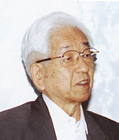 Keynote Proposal 1
Keynote Proposal 1
"Damage Reduction,
Human Resources and Urban Development and Crisis Management"

- Kojiro Niino
-
- Chairman , Kobe Institute of Urban Research
The most important lessons that the Great Hanshin-Awaji Earthquake taught us were the following. Firstly, that crisis management beginning after its occurrence would be in haste and incomplete in the extreme. Secondly, that it is vital to ensure that various structures are already in place before any crisis occurs that will enable crisis management to be implemented to a degree of success.
It has been pointed out that in the comparatively none-too-distant future Japan will be subject to an oceanic trench or inland earthquake, and warnings are also being made in the Asia Pacific region not merely about the danger of earthquakes, but of possibility of the outbreak of a variety of disasters. I now serve as the Chair of the Committee on the Global Assessment of Earthquake Countermeasures, established five years after the Great Hanshin-Awaji Earthquake, and as Chair of the recently established 10th Year Restoration Committee. Discussion is still on-going in the latter committee and final conclusions are yet to be reached. However, with the benefit of the experiences and investigations of these committees, I would like to try to explain a little about what is necessary to achieve damage reduction in the event of a large-scale earthquake, and the significant role people can take on in such damage reduction and reconstruction efforts. I would be gratified if this could be useful not only in crisis management but clarifying the conditions required to secure peace of mind and safety.






